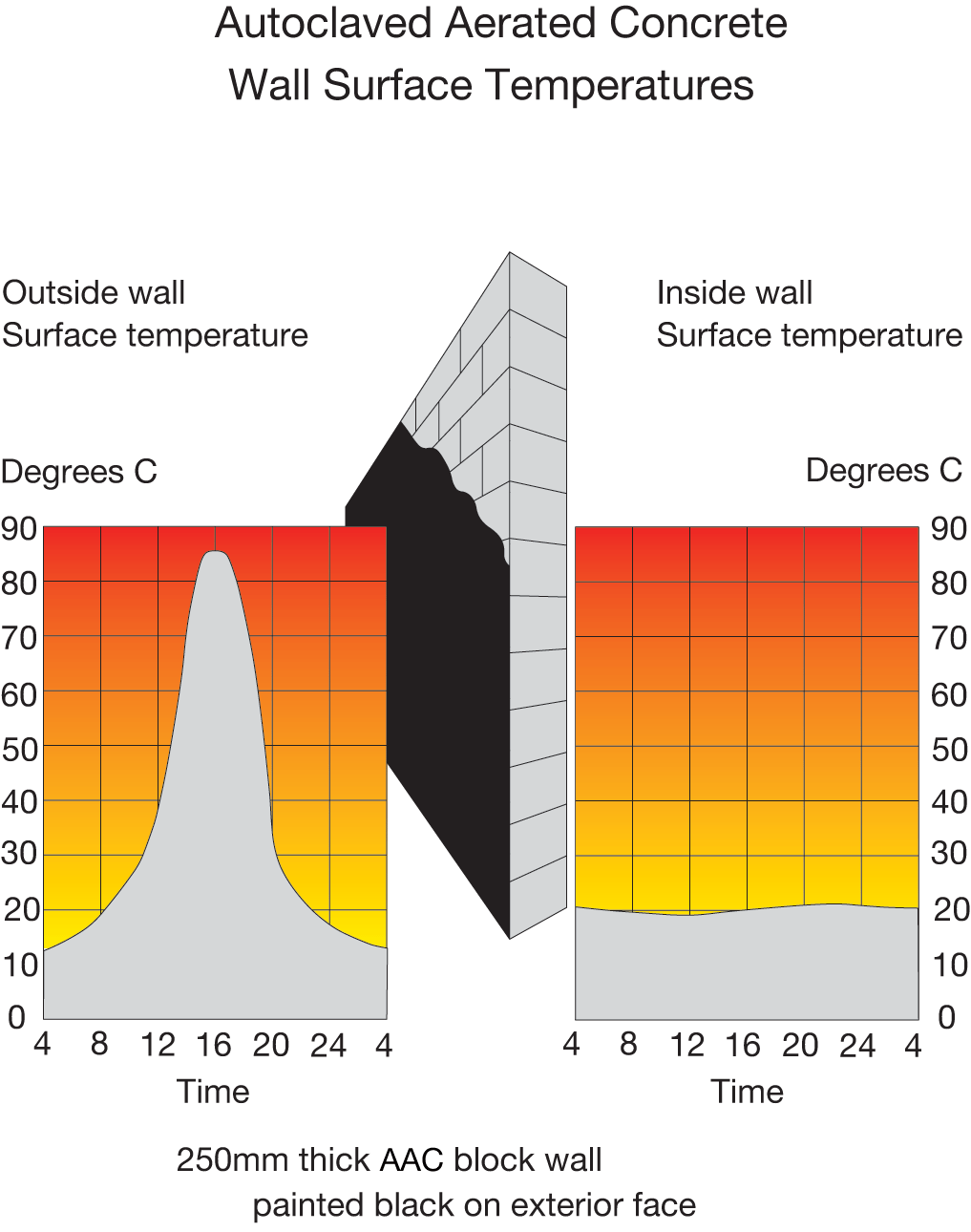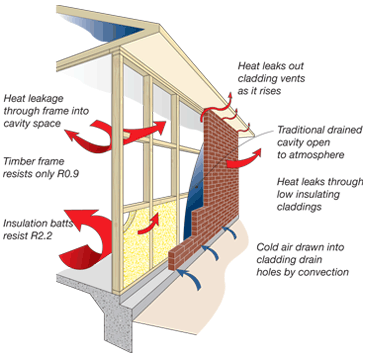Superbuild Sustainable Building |
|
Building in a "sustainable" manner is an ideal that is currently generating much interest and debate. Most of us grasp that sustainability centres around good environmental practices and energy efficiency, but what a "sustainable building" actually entails, is still awaiting complete definition. To date, focus has been mostly on energy conservation - both in reductions in consumption through improved insulation, passive solar design and lower energy use appliances, to alternative creation of energy, such as electricity from solar & wind power. However, there is also a growing awareness of the need to assess environmental and biodiversity impacts, consumption and waste of the planetsÍ raw materials, intergenerational durability, creation of comfortable, healthy building spaces and social and infrastructure impacts. These are all components of a sustainable building and although measuring these items can be an inexact process, aiming to improve the quality of building in New Zealand by considering these issues, is worthwhile. Choosing the Right Building MaterialsBuilding products, which combine all the features necessary to be generally accepted as sustainable materials, are hard to find. Often products touted as eco-friendly or energy efficient, will exhibit some, but not enough, of the sustainable attributes to be truly considered gentle on the environment, efficient in energy reductions or even economic to build with. Too often, the building design is not sympathetic to the product limitations and a thermally inefficient structure is the result. Fortunately, an affordable, high performing material is available in New Zealand which is meeting and exceeding a great deal of the expectations of those designing for sustainability. Supercrete Autoclaved Aerated Concrete (AAC) is available nationwide in a variety of forms. Supercrete is a cellular concrete with 80% of its volume made up of entrained air spaces. Fused into a crystallized material in a high pressure autoclave, this dimensionally stable, lightweight, insulating product is made as either blocks, or reinforced panels. Strong enough for multi storey applications, yet at a fifth of the weight of conventional dense concrete, it reduces load on all ancillary structures, resulting in savings throughout the building. Reduced Raw Materials ConsumptionSupercrete meets the aims of sustainability on many levels. Firstly, the raw materials are plentiful- sand, lime and water make up the bulk of the AAC's composition. The aeration and expansion of the material makes for excellent use of these raw materials. For each cubic metre of sand and lime entering the production factory, four cubic metres of building product is created. Seldom are the Earths resources used so effectively and sparingly. No Manfacturing By-ProductsThe only manufacturing by-product is harmless steam, as nearly all production waste material is crushed and recycled into the mix. No harmful chemicals are added and Supercrete emits no toxicity. A safe, natural material made from some of the planets most abundant minerals - silica and calcium. Thermal PerformanceApart from its low environmental impact and low embodied energy compared to conventional masonry products, where Supercrete really excels is in thermal insulation, allowing the end user to massively reduce energy consumption during the occupancy of the structure. The comfort offered by Supercrete walls and floors is primarily due to the insulating effect of itÍs small, disconnected air bubbles resisting heat movement. It has a long thermal lag time on the remaining conducted heat and, on a much smaller scale, some thermal mass characteristics in terms of radiance. Understanding Thermal Mass and Thermal ResistivityAs a nation almost devoted to timber framed construction, the design concepts and philosophies relating to solid concrete or masonry structures are not as often practiced and therefore are often less understood in this country. One such area is the correct application of dense thermal mass elements within a structure. Critical to understanding where to use mass, is grasping the difference between free heat energy from solar gain and purchased energy from heating appliances. If an element within a building can be oriented in such a way that it will capture free heat energy from the sun and there is the opportunity to store and release this heat after the sun has set, then these elements should be dense to allow the heat capacity, or thermal mass of a dense element to be exploited. However, if the building element is oriented so that it does not get this free energy, or it receives it on the exterior surface only, then making it from a dense material in the hope of thermal mass providing comfort in winter is a lost cause and false economy. This is because in order to get heat radiating inside from these shaded elements, the interior must first be heated up with purchased energy. Because dense materials are poor insulators, their high conductivity allows the purchased heat to bleed to the exterior, whilst only a fraction will be radiated back to the occupant - a poor return on investment and an inefficient use of power resources. Generally, a building shell should be insulated with materials that provide good thermal resistivity, containing the heat gained from either free or purchased energy in winter and protecting the interior from excessive heat levels in the summer. Thermal mass elements should be judiciously placed to maximise their benefit to the provision of heat inside the building shell. A good example of a thermal mass element is the floor slab area within a few metres of the north facing glazing. This will capture the sun's heat (especially if finished in a conductive material like dark coloured slate or ceramic tiles). Once the curtains are drawn at night, the stored heat in this slab can be released into the room, but contained by the insulating shell of the building. Fluid filled under-floor heating pipes can utilise this hot area of slab to warm the liquid, which travels under thermal convection, to cooler parts of the room to help spread the warmth. Some internal walls can be made as dense thermal mass heat sinks, but again careful thought needs to go into whether these elements get their heating (or cooling) from free or purchased energy sources. One of the most sensible approaches to external wall design is to opt for Supercrete AAC walls. These walls demonstrate a high resistance to heat transfer. New Zealanders who live in Supercrete homes swear by the increased level of comfort. This is not offered just by the thermal resistivity or (R) Value of the product, but by a combination of the following features; reflection of heat from the hard surfaces, absorption and radiance of heat in the mineral component, and insulation provided by the millions of still air spaces within the material. Unlike framed structures, where thermal bridging at the timber frame members allows the escape or ingress of heat through the low resistive grid of studs and nogs, solid Supercrete Block or Panel walls provide consistent levels of insulation across the whole wall. The lattice of frames, leaking heat through a conventional wall means traditional insulation batts in the frame spaces must have high (R) Values to compensate. Supercrete, by comparison may have lower (R) Values, but the unbroken continuity of this insulation provides a more consistent level of comfort. There are numerous examples of thermal mass structures built from low resistive dense materials like rammed earth, dense concrete slabs or masonry. Many of these mistakenly use mass on all walls and consequently have cold, uncomfortable southerly rooms, which receive little free solar heating and contain little of the purchased heating, due to low insulation levels. Good thermal design encompasses both thermally resistive external walls and correctly positioned mass storage elements internally. By far the simplest approach to the shell structure, is to use insulating materials. In New Zealand, insulated masonry or insulated solid wall systems exist commonly in the form of polystyrene foam block formers for concrete fill, polystyrene sandwiched in tilt slabs or similar variants. None of these can be considered low embodied energy or environmentally friendly. By contrast, Supercrete stands out as the premier sustainable building product available for responsible building practices. Used worldwide, since its invention in 1923, this material is fast becoming a favourite with New Zealand design professionals, with the Supercrete Panel Cladding ranking fourth most popular from the AGM survey of 12,000 building and design professionals in 2005. |


